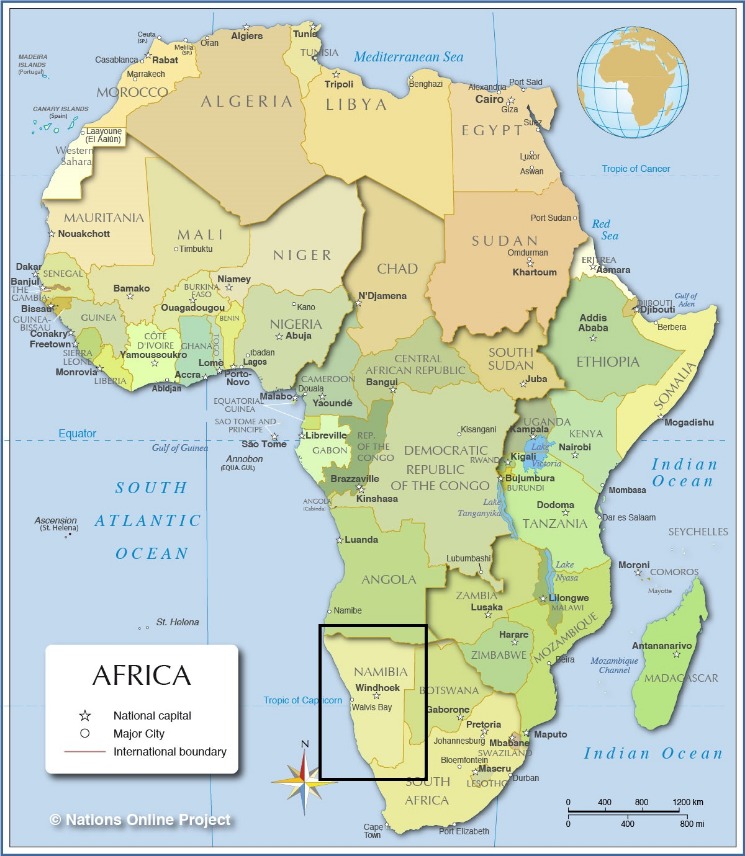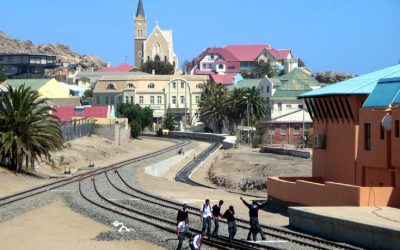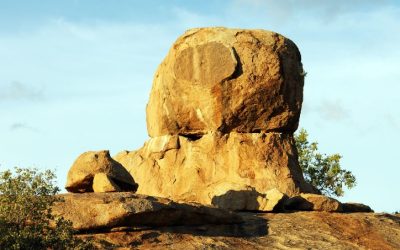Origins and History of the Himba
The Himba are a semi-nomadic indigenous people residing in the arid regions of northern Namibia, known for their rich cultural heritage and distinctive appearance. Their origins trace back several centuries, with roots intertwined with other Bantu-speaking groups that migrated into the region. Historically, the Himba’s society was founded on cattle-herding traditions and a deep spiritual connection to their land and ancestors. Over centuries, they have preserved many of their ancestral customs despite external influences, maintaining a strong sense of identity and cultural continuity in the modern era.
Ancient Roots and Ancestral Lineages
The Himba people of Namibia possess a rich heritage rooted in ancient traditions that date back centuries. Their origins can be traced to the early Bantu migrations, which brought various groups into the region hundreds of years ago. Over time, the Himba developed a distinct cultural identity, heavily influenced by their environment and spiritual beliefs. Their ancestors are believed to have migrated from Central Africa, settling in the region now known as northwestern Namibia. These ancestral lineages are preserved through oral histories, rituals, and customs that emphasize continuity and reverence for their heritage. The Himba’s historical narrative is intertwined with their kinship systems, traditional practices, and the deep spiritual connection they maintain with their ancestors, ensuring their cultural legacy endures through generations.
Historical Migration and Settlement Patterns
The Himba are a semi-nomadic pastoralist people indigenous to the northwestern regions of Namibia, renowned for their distinctive cultural practices and attire. Their origins trace back centuries, with roots linked to the broader Ovamboland communities, from which they diverged through migration and cultural development. Historically, the Himba have maintained a strong cultural identity, despite various external influences and pressures.
Throughout their history, the Himba have engaged in migrations that shaped their settlement patterns. They originally migrated from the central regions of Namibia and gradually moved westward toward the Kunene River basin. This migration was driven by factors such as resource availability, pastoral needs, and conflicts with neighboring groups. Over time, they established their settlements in arid and semi-arid areas that support their pastoral lifestyle.
- The Himba’s historical migration patterns are marked by movement from central Namibia towards the Kunene River, seeking drought-resistant grazing land.
- Their settlements tend to be concentrated near water sources, enabling sustainable herding and livestock management.
- Over centuries, the Himba have adapted to the challenging environment by developing unique cattle husbandry and survival strategies.
- Despite episodes of displacement and external disruptions, the Himba have preserved their language, customs, and social structures, maintaining continuity across generations.
Interactions with Neighboring Tribes
The Himba people of Namibia are a semi-nomadic ethnic group with a rich history that dates back several centuries. Traditionally, they have inhabited the northwestern regions of Namibia, particularly in the Kunene Province, where their way of life remains closely tied to their environment and pastoral practices. Originating from the OvaHimba, they have maintained their cultural identity through oral traditions and customs despite external influences and changes over the years.
The origins of the Himba are believed to be linked to the broader Herero and Otjiherero-speaking communities, sharing cultural and linguistic traits. Historically, they migrated from central parts of Namibia, settling in their current territories, where they adapted to the arid desert landscape. Their history is marked by resilience and a strong connection to cattle, which is central to their social and spiritual life.
Throughout their history, the Himba have interacted with various neighboring tribes, including the Herero, Damara, and Twana. These interactions have ranged from alliances and trade to conflicts and cultural exchanges. The Himba maintained semi-autonomous status for much of their history, often defending their land against external threats from colonial forces and other groups.
Today, their interactions with neighboring tribes continue to influence their culture and social structure, just as they preserve many of their traditional customs amid modern influences.
- Migration and Settlement: The Himba migrated from central Namibia to the Kunene region centuries ago, establishing their current settlements.
- Cultural Exchanges: They engaged in trade and cultural interactions with neighboring tribes like the Herero and Damara, sharing religious beliefs, customs, and practices.
- Conflicts and Alliances: Historically, they faced conflicts over resources and territory but also formed alliances to protect their communities.
- Colonial Impact: Colonial rule introduced new challenges, leading to shifts in social structures and interactions with other groups.
- Modern Relations: Today, they continue to maintain cultural ties and negotiate their place within the broader Namibian society alongside their neighbors.
Cultural Practices and Traditions
The Himba people of Namibia are renowned for their rich cultural practices and unique traditions that have been preserved over generations. Their vibrant customs reflect a deep connection to their history, environment, and spiritual beliefs, offering a fascinating glimpse into a way of life that continues to thrive amidst modern influences.
Clothing and Adornments
The Himba of Namibia are renowned for their rich cultural practices and traditional ways of life that have been preserved over generations. Their cultural identity is deeply rooted in their customs, rituals, and social structures, which help maintain their connection to their heritage. A significant aspect of their culture is their distinctive attire and adornments, which serve both functional and symbolic purposes.
The Himba women are particularly famous for their unique clothing and jewelry. They typically wear skirts made from animal skins and adorn themselves with intricate jewelry crafted from iron, bones, shells, and beads. Their skin and hair are also decorated with ochre, a reddish clay that not only gives them their characteristic appearance but also acts as protection against the sun and insects. Women often style their hair into elaborate, intricate patterns and add ornaments to signify their social status or age.
Men and women alike participate in traditional practices that reinforce their cultural identity, including ceremonies, dance, and storytelling. Clothing and adornments are important markers of identity within the Himba community, with each piece often carrying specific meanings related to age, social standing, or personal achievements. These practices and adornments serve to preserve their cultural heritage while also allowing for individual expression within the community.
Himba Hairstyles and Their Significance
The Himba of Namibia are renowned for their rich cultural practices and unique traditions, among which hairstyles hold significant cultural importance. Hairstyles among the Himba serve as a powerful form of communication, conveying social status, age, marital status, and even tribal identity. For example, young girls typically wear intricate braids covered in red ochre paste, symbolizing their coming of age and readiness for marriage. Married women often style their hair into elaborate shapes that depict their social standing and respect within the community. Men and boys have different hairstyle configurations that indicate their age and maturity. These hairstyles are not only expressions of individual identity but also reinforce communal bonds and cultural values. The use of natural materials, such as ochre, ash, and herbs in hairstyling, reflects the Himba’s deep connection to their environment and traditions. Overall, Himba hairstyles embody a visual language that preserves and promotes their cultural heritage across generations.
Traditional Rituals and Ceremonies
The Himba people of Namibia are renowned for their rich cultural practices and unique traditions that have been preserved for generations. Central to their identity are traditional rituals and ceremonies that serve to strengthen community bonds and honor their ancestral heritage. These practices often involve elaborate rituals, music, dance, and symbolic attire, reflecting their deep spiritual beliefs and connection to nature. For example, the coming-of-age ceremonies for young Himba girls mark significant milestones in their lives, accompanied by specific rituals and traditional adornments. The Himba also maintain a distinctive way of life deeply rooted in their customs, which include complex social norms, offerings to their gods, and festivals that showcase their vibrant cultural heritage. Overall, their traditions continue to play a vital role in maintaining their community cohesion and cultural continuity in modern times.
Language and Communication
The Himba of Namibia are a semi-nomadic people whose rich cultural heritage relies heavily on unique forms of language and communication. Their methods of expressing ideas, maintaining social bonds, and preserving traditions showcase the intricate ways in which language serves as a vital tool for their community. Exploring how the Himba communicate offers valuable insights into the role of language in shaping identity and cultural continuity among indigenous groups.
Himba Dialect and Linguistic Features
The Himba of Namibia are a semi-nomadic indigenous group known for their unique language and rich linguistic features. Their language, often considered a dialect of Otjihimba, a Bantu language, reflects their cultural identity and social organization. Himba speech encompasses distinct phonetic, morphological, and syntactic elements that set it apart from neighboring languages.
One notable linguistic feature of Himba dialect is the use of tone to differentiate meanings, a common trait among Bantu languages. Their vocabulary incorporates words related to pastoralism, spirituality, and daily life, which are central themes in their communication. Additionally, the Himba language employs specific click sounds and nasal vowels, adding to its phonetic richness, and these sounds are integral to preserving their oral traditions and storytelling practices.
Furthermore, the Himba dialect demonstrates particular grammatical structures, such as noun class systems and concord agreements, which are characteristic of many Bantu languages. These features facilitate precise expression of relationships and social distinctions within the community. Understanding the linguistic features of the Himba dialect provides insight into their cultural values and enables efforts to preserve their linguistic heritage amidst external influences.
Use of Symbols and Oral Traditions
The Himba people of Namibia possess a rich tradition of language, communication, and the use of symbols and oral stories that reflect their cultural identity. Their language, Otjihimba, is an integral part of daily interactions and cultural preservation, serving as a vessel for transmitting values, history, and social norms across generations. Oral traditions play a crucial role in their society, with storytelling, praise songs, and proverbs conveying wisdom, mythology, and collective history. Symbols, such as the intricate body paint and traditional attire, communicate social status, age, and personal achievements, functioning as visual language that reinforces community bonds and cultural identity. Through these oral and symbolic practices, the Himba maintain a deep connection to their heritage and ensure the continuity of their unique way of life amidst changing external influences.
Social Structure and Organization
The Himba of Namibia represent a unique social structure and organization that reflects their rich cultural heritage. Their society is traditionally organized around family groups and clans, with a strong emphasis on kinship ties and social roles. Understanding their social dynamics provides insight into how they maintain their cultural identity and adapt to changing environments in the modern world.
Family Units and Clan Systems
The Himba of Namibia have a well-defined social structure characterized by strong family units and clan systems that shape their community life. Family units are central to Himba society, often consisting of extended families that live together and share resources. These households are typically led by a head of the family, who guides decision-making and maintains social cohesion. Clan systems are an essential aspect of their social organization, serving as larger kinship groups that provide mutual support and social identity. Clans are often based on patrilineal descent, with members recognizing common ancestors and maintaining traditions that reinforce their bonds. This hierarchical and kinship-based organization helps sustain cultural continuity, facilitate cooperation, and regulate social behavior within the Himba community. Overall, their social structure is deeply rooted in kinship ties, emphasizing the importance of family and clan relationships in daily life and societal stability.
Leadership and Decision-Making
The Himba of Namibia exemplify a social structure deeply rooted in tradition and kinship, shaping their organization and leadership roles. Their society is primarily organized into clans and families, with social status and responsibilities passed through generations. Leadership within Himba communities is often informal, led by elders who hold influence based on age, wisdom, and experience rather than formal titles or political power.
Decision-making processes tend to be communal, emphasizing consensus among elders and community members. This collective approach ensures that cultural practices and societal norms are upheld consistently, maintaining social cohesion. Leadership and decision-making are closely tied to their cultural values, including respect for elders and the importance of maintaining harmony within their society.
- Clan and kinship form the foundation of social organization, defining individuals’ roles and responsibilities.
- Leadership is typically held by elder males or respected community members who serve as advisors rather than rulers.
- Decision-making is communal, often involving consensus among elders and community members.
- Cultural norms and traditions play a significant role in guiding social interactions and governance.
- Respect for age, experience, and tradition is central to the social hierarchy and organizational structure.
Himba Lifestyle and Daily Activities
The Himba people of Namibia are renowned for their rich cultural traditions and unique way of life. Living in the arid regions of northern Namibia, they have maintained their ancestral customs for generations. Daily activities for the Himba center around herding cattle, gathering resources from the land, and preparing traditional foods. Their lifestyle reflects a deep connection to nature and a resilient community spirit that endures amid challenging environmental conditions.
Agriculture and Livestock Rearing
The Himba people of Namibia are a semi-nomadic tribe known for their distinct lifestyle, rich cultural traditions, and close relationship with their environment. Their daily life revolves around community activities, cattle herding, and maintaining their traditional customs. Himba women are renowned for their intricate hairstyles and the application of otjize paste, made from butterfat and ochre, which protect their skin from the harsh desert climate. Men primarily engage in cattle herding, which is central to their livelihood and social status. The Himba’s way of life emphasizes harmony with nature, where their daily routines include tending livestock, collecting water, and performing cultural rituals.
Agriculture among the Himba is limited due to the arid climate of the region, but they grow small crops such as maize, millet, and pumpkins in areas that receive seasonal rains. Their farming practices are traditional and rely heavily on hand tools, with the emphasis on sustaining their household needs. Livestock rearing, especially cattle, goats, and sheep, is vital to the Himba community, providing not only food but also status and economic security. Cattle serve as a form of currency and are used in social ceremonies, inheritance, and as a resource for milk and meat. The Himba’s lifestyle is deeply interconnected with their environment, reflecting their adaptation to the challenging desert conditions and their preservation of cultural heritage.
Housing and Settlements
The Himba people of Namibia are renowned for their rich cultural traditions and distinctive way of life. Their daily activities are centered around pastoralism, agriculture, and maintaining their cultural practices. Himba women are responsible for household chores, crafting, and caring for livestock, while men focus on herding and supporting community needs. Daily routines often include fetching water, preparing traditional foods, and engaging in community events that strengthen social bonds.
The Himba live in semi-permanent settlements called overt or outdoor villages, composed of circular, mud-and-wood structures called manyattas. These dwellings are designed to be easily rebuilt and adapted to seasonal changes. Their settlements are strategically located near water sources and grazing areas for cattle, which are vital to their sustenance and economy. The Himba are semi-nomadic, moving their settlements periodically to ensure access to pastures and water, reflecting their close relationship with the environment.
The Himba lifestyle emphasizes simplicity and harmony with nature, with daily activities intertwining with traditional customs, social responsibilities, and environmental stewardship. Their housing reflects their resourcefulness and cultural identity, with their settlements serving as centers of community life and cultural preservation.
Diet and Food Practices
The Himba people of Namibia are a semi-nomadic tribe known for their distinctive culture and traditional lifestyle. Their daily activities are centered around herding cattle and goats, which are vital for their livelihood and cultural practices. Himba women often spend much of their day tending to livestock, collecting water, and participating in household chores, while men are primarily involved in cattle herding and communal work.
The Himba lifestyle is deeply rooted in their pastoral way of life, which influences their social structure and community interactions. They live in red ochre-painted huts made from mud and thatch, creating a close-knit community environment. Their way of life emphasizes resilience, community bonding, and a strong connection to their land and cattle.
The Himba diet is predominantly based on dairy products such as milk, butter, and cheese obtained from their cattle. They also consume various grains, vegetables, and fruits when available, supplementing their diet with wild plants and game. Food practices are closely tied to their pastoral economy, with cattle serving not only as a food source but also as a symbol of wealth and social status.
Oils and ointments made from red ochre and herbs are used regularly for skin and hair care, reflecting their cultural identity and aesthetic preferences. Traditional Himba cuisine is simple yet hearty, often prepared over open fires, and their food practices emphasize sustainability and respect for their natural environment. Overall, the Himba lifestyle remains a vibrant example of preserving ancient traditions amidst modern changes.
Traditional Clothing and Body Decoration
The Himba people of Namibia are renowned for their rich cultural heritage, which is vividly expressed through their traditional clothing and intricate body decoration. Their vibrant red ochre body paint, distinctive hairstyles, and unique attire symbolize their social identity, ancestral connections, and customs. These elements not only serve aesthetic purposes but also reflect deep cultural meanings, making Himba traditional clothing and body adornment an integral part of their identity and way of life.
Oshigongo and Red Ochre Usage
The Himba people of Namibia are renowned for their distinctive traditional clothing and body decoration that hold significant cultural meaning. Their clothing typically consists of minimal garments made from animal hides, designed to suit the arid climate and traditional lifestyle. Women often adorn themselves with intricate jewelry crafted from metals, beads, and shells, which signify social status and age. The Himba are also famous for their use of body decoration, including the application of otjize, a mixture of butterfat and red ochre, which they smear on their skin and hair. This vibrant, reddish coloration not only protects their skin from the harsh sun but also symbolizes beauty, strength, and connection to their heritage.
Oshigongo, a type of traditional red ochre, plays a crucial role in Himba body art. It is made from natural minerals and mixed with fats to create a paste that is applied during special ceremonies or daily rituals. The red ochre signifies earthiness, vitality, and life force, reflecting the Himba’s close relationship with nature. The use of Oshigongo in body decoration reinforces their cultural identity and spiritual beliefs, serving both aesthetic and symbolic purposes. Through these practices, the Himba people preserve their unique cultural expression, emphasizing beauty, tradition, and their harmonious relationship with the natural environment.
Jewelry and Ornamentation
The Himba people of Namibia are renowned for their distinctive traditional clothing and body decoration, which serve as important symbols of their cultural identity and social status. The women typically wear skirts made from goat wool and intricately styled leather garments, often adorned with beads and ornaments that reflect their age, social standing, and marital status. Their skin is notably coated with a mixture of red ochre, butterfat, and aromatic herbs, creating a striking reddish hue that symbolizes earth, fertility, and protection from the sun. Furthermore, the Himba women decorate their hair with elaborate styles, often incorporating shells and beads, which are also significant markers of age and social hierarchy. Jewelry and ornamentation play a vital role in Himba culture, with necklaces, bangles, and headdresses crafted from metals, beads, and natural materials, helping to enhance beauty and demonstrate cultural identity. These adornments and traditional clothing, deeply rooted in Himba customs, vividly showcase their rich heritage and connection to their environment.
Himba Spiritual Beliefs and Religious Practices
The Himba people of Namibia possess a rich spiritual tradition deeply rooted in their cultural identity. Their religious practices are centered around reverence for their ancestors, nature, and divine forces that influence their daily lives. Through rituals, offerings, and ceremonies, the Himba maintain a strong spiritual connection that guides their community and preserves their ancient beliefs.
Ancestors and Spiritual Guardians
The Himba people of Namibia have rich spiritual beliefs that center around a deep connection with their ancestors and spiritual guardians. They believe that their ancestors play an active role in their daily lives, providing guidance, protection, and blessings. Rituals and ceremonies are often performed to honor and communicate with these ancestors, ensuring their continued favor and safeguarding of the community. Spiritual guardians, such as spirits associated with natural elements like fire, water, and earth, are also revered and considered essential in maintaining harmony with the environment. These practices reflect the Himba’s intrinsic belief in a spiritual world intertwined with the physical one, emphasizing respect for nature and the ancestors who influence their well-being. The spiritual system is deeply embedded in their cultural identity, guiding moral values, social norms, and their relationship with the environment around them.
Rituals and Sacred Sites
The Himba of Namibia are renowned for their rich spiritual beliefs and religious practices that are deeply intertwined with their daily lives and cultural identity. Their spiritual worldview centers on a strong connection to nature, ancestral spirits, and the divine, which guides their customs and rituals.
Clergy, shamans, and elders play vital roles in maintaining spiritual traditions, often acting as intermediaries between the Himba and the spiritual realm. Their practices include offerings, prayers, and rituals designed to honor ancestors and seek protection and blessings for their community.

Significant rituals among the Himba include purification ceremonies, offerings to spirits, and rites of passage such as initiation into adulthood. These rituals often involve specific symbolic acts, the use of sacred fire, and the application of traditional red ochre, which holds spiritual significance.

Several sacred sites are vital to Himba spirituality, serving as focal points for ceremonies and ancestral worship. These sites are often natural landmarks like rocks, rivers, or specific areas in the desert considered to be spiritually charged or inhabited by spirits.
- Mjui: A sacred place where ancestral offerings are made and rituals are conducted.
- Traditional shrines: Locations near water sources or specific landmarks where sacred ceremonies take place.
- Desert and natural landscapes: Seen as abodes of spirits and ancestral ancestors, often treated with reverence and respect.
The Himba’s spiritual beliefs remain a crucial part of their identity, emphasizing harmony with nature, reverence for ancestors, and the continuation of age-old rituals that preserve their cultural heritage.
Impact of Modernization and Tourism
The Himba of Namibia exemplify a community deeply rooted in tradition, yet their way of life has been increasingly influenced by modernization and tourism. These external forces have brought both opportunities and challenges, impacting their cultural practices, economy, and social dynamics. Understanding this impact is essential to appreciating how the Himba navigate preserving their heritage while adapting to contemporary changes.
Changes in Traditional Lifestyles
The Himba people of Namibia have experienced significant changes in their traditional lifestyles due to modernization and the growth of tourism. These influences have introduced new ways of life, impacting their cultural practices and social structures. Increased tourism has brought economic opportunities, but it has also led to the commercialization of their customs and traditions, sometimes causing a dilution of authentic cultural expressions. Modernization has introduced new technologies and amenities, altering traditional daily routines and dress codes, while also influencing perceptions of identity among younger Himba generations. Despite these changes, many Himba people strive to preserve their heritage while adapting to new realities, balancing tradition with the demands of the modern world.
Tourism and Cultural Preservation
The Himba of Namibia exemplify how modernization and tourism influence traditional lifestyles and cultural preservation. As tourism increases, there is greater global awareness and appreciation of their unique customs, attire, and rituals, which can boost the local economy and foster pride among the Himba community. However, this influx of visitors can also pose challenges, such as cultural commodification and loss of authenticity, as certain traditions are adapted to meet tourist expectations. Striking a balance between embracing tourism for economic benefits and maintaining cultural integrity is crucial for the Himba to preserve their identity in a rapidly changing world.
Challenges and Opportunities
The Himba of Namibia exemplify how modernization and tourism can significantly influence traditional communities, bringing both opportunities and challenges. As tourism grows, it offers economic benefits, such as improved income sources, enhanced infrastructure, and increased global awareness of the Himba culture. These developments can lead to better living conditions and cultural preservation efforts. However, modernization and tourism also pose risks, including cultural commodification, loss of traditional practices, and environmental degradation. The influx of visitors can pressure the community to conform to tourist expectations, sometimes at the expense of authentic traditions. Balancing the benefits of tourism with the need to protect the Himba’s cultural identity and environment is crucial. Initiatives that promote sustainable tourism and respectful engagement can help harness opportunities while mitigating negative impacts, ensuring that modernization benefits the Himba community without compromising their heritage or natural surroundings.





0 Comments